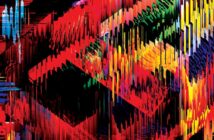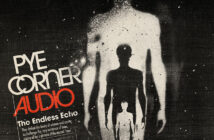
When utilising devices not designed for ‘conventional sound generation’ interesting results can, and quite often do, emerge. Antimatter aka Xopher Davidson offers up 11 studies in what could be described as ‘non-linear sound composition’ using signal generators, test equipment and an analogue computer (whatever that is) as a modular synthesizer of sorts, creating washes, fades and blasts of white noise in a symphony of electronic pulses, rumbling tones and dense oscillations.
“Cloud of Possibility” blooms and rolls like its namesake, all manners of sound generators whirring and humming together forming a density of mechanised synthesis. Merging seamlessly with plate reverb tones into “Waveguide” things turn decidedly low frequency as differing wavetables phase and slide back and forth, popping in and out of existence, sawtooths and sinetones alike bustling for space. “Bistable Trip Module” sounds as it is called (as do most all pieces here); a twofold generative device designed to take you on a journey. With its crashing waves of white noise and digital undertones, it feels almost like being dumped by an enormous wave, and indeed as “Sea of Tranquility” begins with gentle synth chords (!), the theme continues, like you’re caught in slow motion under the waters surface, as the waves roll and buck above. Slowly we sink into the dark, the first respite so far. As the piece stirs again, tones sounding like the wings of a giant mechanical moth fluttering in the dark move ever so slowly towards the light. “Sverdlovsk-45” commences the second half of the album with sharp blasts of white static, as rapid fire frequency squiggles zip around underneath. “Reference Bridge” drops into a dark abyss of ominous tones and chaotic buzzes, gradually rising in tone as the piece proceeds, while “Band Limiter Impulse Train” pushes itself to escape velocity, oscillating faster and faster until it transforms in tonality completely. “Time Projection Chamber” closes the track set with almost reflective restraint, before crescendo-ing and falling away into tonal oblivion.
Advised as being recommended for fans of Varese, Throbbing Gristle and Klaus Schultze, this release will most likely delight synthesis enthusiasts, with its complex study of signal generation and wavetable differentiation. This isn’t to say that anyone not versed in such practices will not understand this work, but like many sound-art pieces, a certain modicum of understanding can be a distinct advantage when attempting to decipher the material in question. An intriguing, if challenging work.
Nick Giles



